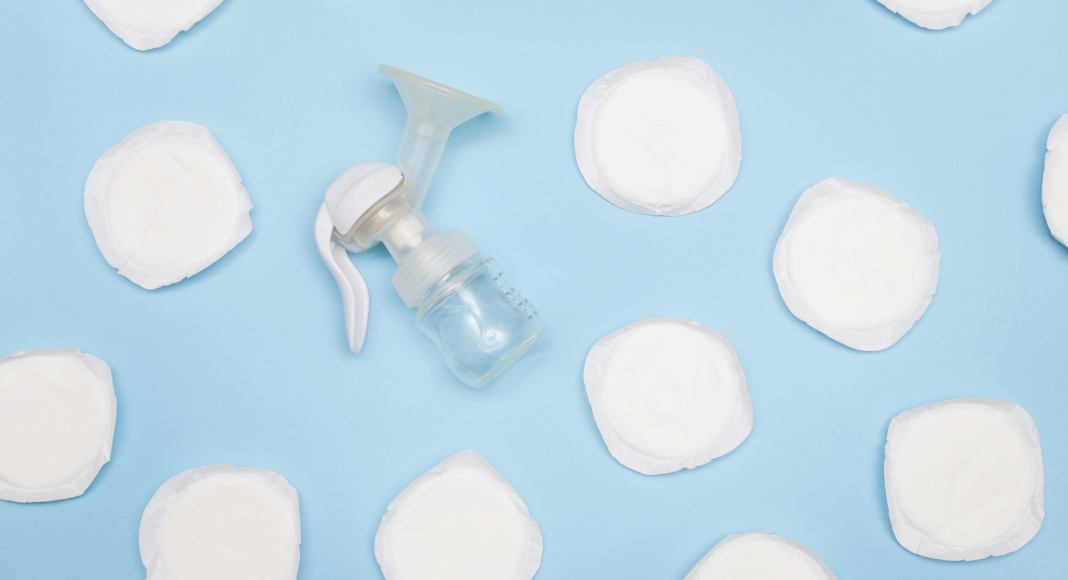 Pumping can be confusing and overwhelming for a new mom.
Pumping can be confusing and overwhelming for a new mom.
With my first son I was planning to return to work and my goal was to have a strong milk stash before my maternity leave ended. However, I made many mistakes that affected my supply and made the first few months of pumping unnecessarily stressful.
Here are some of the lessons I learned:
1. Choose the right pump (and make sure you have a backup):
There are so many great pumps out there, and if you are like me, you can spend countless hours comparing your options. Here are a few things to keep in mind:
- A double pump will save you so much time!
- Go with closed system breast pump to ensure there is no leakage between the expressed milk and the mechanism of the pump.
- Choose a pump that will fit your lifestyle: there are rechargeable and portable ones like the Motif Luna and the Spectra S1, wearable pumps like the Elvie and the Willow, and a variety of manual pumps.
- Check with your insurance, as you might be eligible for a free pump (and pump parts). You can also go through Aeroflow Breastpumps to see if you qualify.
I have three pumps that I use for different reasons: Spectra S1, BabyBuddha, and Lansinoh Manual Pump. With my first, I primarily used my Spectra S1 at home and my more portable (and powerful) BabyBuddha in the office as I would get the same output in half the time,. It is always good to have to have an extra pump (even if it is just a $20 manual pump) in case your main one breaks down, or if one of the parts needs to be replaced. I kept two manual pumps on-hand for emergencies (one at work and one at home). The back-up pump at work saved me on many occasions when I forget to pack one of the many small parts to the office!
Once you choose your pump, make sure you have the right size flanges as having them too big or too small could affect your supply and damage your breasts. Checking the website or manual of your pump will help you figure out what size works best, and you might need to try a few sizes before finding the right fit. Groups like the Breast Pumping/Estimate Flange Sizing and all things related are a good resource to help.
2. Keep the right items on hand
While your pump is the main tool to express milk, you will need some other items to make your journey successful and smooth:
- Make sure you have multiples of each parts of your pump (I have four sets of flanges, duckbills, backflow protectors, bottles etc). Your duckbills and backflow protectors will need to be replaced regularly. I recommend ordering your extra parts from either MayMom or NeneSupply stores on Amazon.
- You will need breastmilk storage bags to freeze or keep in the fridge. My favorite ones are the Lansinoh bags but many mamas love using the Kiinde twist pouches.
- A pumping bra will helpkeep your hands free –my two favorite are the Kindred Bravely and the Bravado.
- If you are prone to clogged milk ducts, having a breast massager could be a lifesaver. I have a LaVie lactation massager, but you can also use an electrical toothbrush in a pinch. Sunflower Lecithin will also help improve your milk flow to help avoid any issues.
If you are a busy mama (who isn’t?!), the Medela sanitizing bags are great for quickly sterilizing your pump parts. I wash my parts with warm water and dish soap after every use and sterilize my parts once or twice a week.
3. Develop a pumping routine
You have probably figured out by now that pumping for your little one(s) involves more than just being hooked to a device and extracting milk. You need to follow a schedule, make sure you have all the different parts of the pump, wash these parts, transfer the milk to bottles or storage bags, and repeat (and repeat again!)
If you are exclusively pumping, you will be repeating your routine every three hours on average, and for the mamas pumping while away from your little ones, you should make sure you pump as often as your baby is taking a bottle. For moms who are just pumping to build a stash – like me at the moment – I pump a couple of hours after my son goes to sleep for the night (and before his middle of the night feed). I also pump if he sleeps for more than six hours at night (which is very rare at the moment).
4. Protect your milk supply
There is a lot that goes into how much milk mothers produce : hormones, health, diet, stress levels, etc. To pump successfully, mothers work hard at keeping their supply safe and for me it comes down to this: a consistent routine, a balanced diet, the right supplements, and the correct pump parts. Find out more about tips to maintain your milk production here.
5. Find a community to support you along the way
Surround yourself with people that will encourage you along your pumping/breastfeeding journey. Share your goals with your partner and other immediate family members, and above all, ASK FOR HELP (especially when it comes to cleaning pump parts) !
Joining a few Facebook groups has also been super beneficial to help answer so many of my questions. Here are just a few that I have used:
















